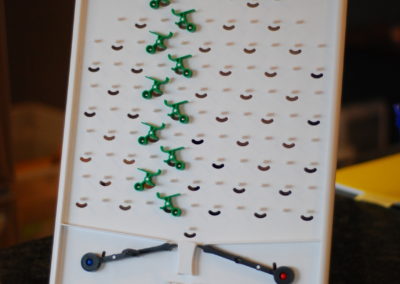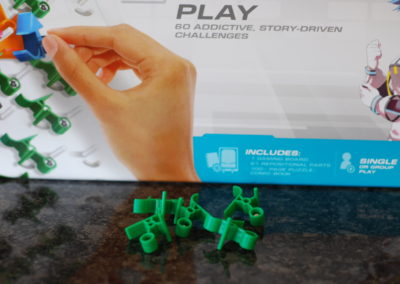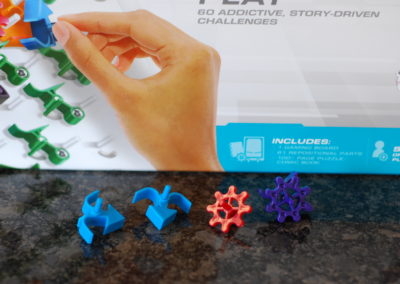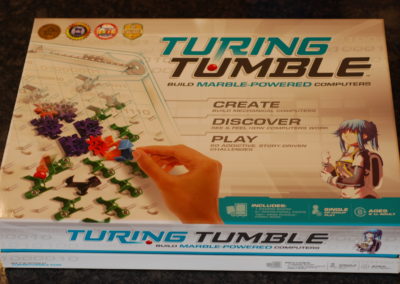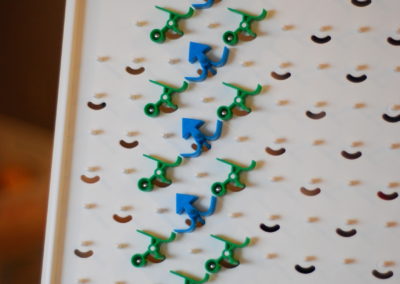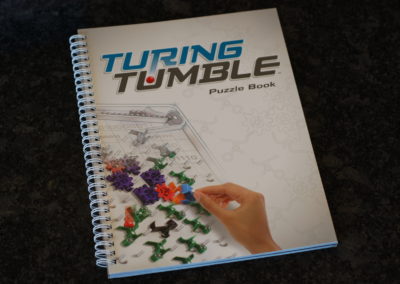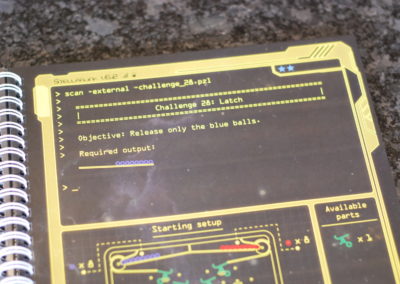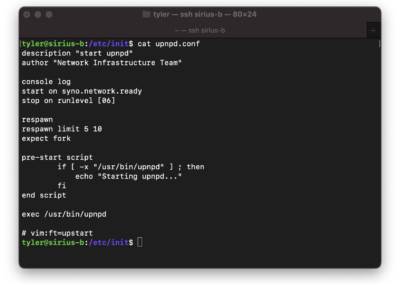A Screen-free Educational Game
With all of the toys and games available to our kids today it’s rare to come across something that is genuinely a new experience. This is what happened to me the first time I sat down with my son to play Turing Tumble—a screen-free educational game.
Andrea purchased Turing Tumble with the hopes that it would provide our kids some STEM education in a hands-on, physical way that would let them develop understanding of foundational concepts while having some fun at the same time. Not being aware of all this background, I simply sat down to play a new game. By the time we used the board to make a four-bit register I found that this game is literally a mechanical computer. It’s basic, but it’s real.
What’s in the Box?
In the box you’ll find the game board, colored marbles, an engaging instruction manual that weaves a story narrative into the game play, and a large assortment of game pieces all carefully placed in their proper location. The entire setup is so well constructed that it is genuinely a pleasure to open and work with. I have noticed that my son also recognizes this as he carefully puts each piece back when we’re done playing.
At first glance this game looks like Plinko, but that is as far as the comparison can be taken. It has two sets of colored marbles held at the top that are released by pressing levers at the bottom. The object of each puzzle is to control how the marbles fall, typically producing a specific pattern of colors at the bottom. A variety of different game pieces can be placed on the board to change how the marbles fall. Each puzzle will help explain how to use the pieces, as well as place limitations on how many you can use for the solution.
The game has obvious styling cues that align with its roots in computer science, such as binary strings on the box, computer terminal-like puzzle descriptions in the manual, and sharing a name with the great Alan Turing. While this all sets the scene for legit geeky fun, it wasn’t until we had completed the first few puzzles that I began to realize the game was doing more than just enjoying a sci-fi theme. It was reminding me of my introduction to microprocessors college class.
Are We in Class or at Recess?
The puzzles start out easy and get progressively more challenging as you progress through the manual. Each puzzle’s difficulty is indicated by the number of stars in the description, and the ranking can go well above five! Sometimes it takes us a few attempts before we make it work, but when we finally get it right it’s definitely a high-five moment.
It’s this great mix of progressive challenge and reward with expertly produced help in the manual that makes this game so fun. It can be played solo, or as a team. I have seen my son set it up to play on his own, and there have been times that I suggested we work through a few puzzles together. It is rewarding to play, and rewarding as a parent to watch your child work through the puzzles and smile when the achievement comes.
Have I mentioned that this game is a mechanical computer? We spend so much time working, studying, and playing on screens that we sometimes forget what it’s like to do something in the physical world. This game is 100% physical, and it’s a great way to have fun and learn some computer theory at the same time. We like it so much that we included it in this year’s Screen-Free Gift Guide.
For more detailed information on the connection between this mechanical computer and the electronic one you’re using now, check out Lesson #1 from the Turing Tumble Educator Guide, available on the Turing Tumble Educator page. They have plenty of help for teachers and parents!
Challenges, Computers, and Connections
Has my son learned computer science by playing this screen-free educational game? A little bit, yes. Is he a computer wizard now? No. Computer science is a big enough field that I don’t really expect anyone to fully understand it until they have a college degree in hand. What this game does is give an entertaining introduction to the basic concept of computing, binary logic, and the fascinating realization that computing does not require electricity. It also gave me a chance to connect with my son as we worked together to solve some challenging puzzles.
If he later decides to enter a field of study that uses this knowledge, he will already have an improved understanding of the key fundamentals. If he doesn’t, the lessons in logic, planning, and mechanics will still be valuable. In either case, he’ll have had a lot of fun in the process.
Because we are such huge fans of Turing Tumble, we now have a code you can use to get free shipping! Use the code BETTERSCREENTIME10 at checkout to get 10% off your Turing Tumble.

